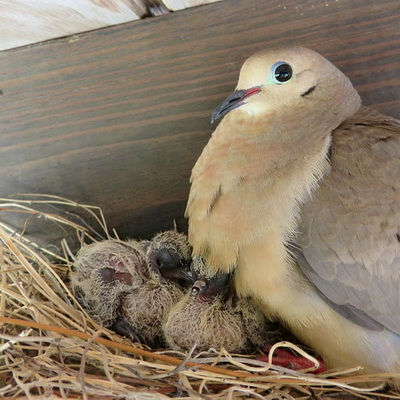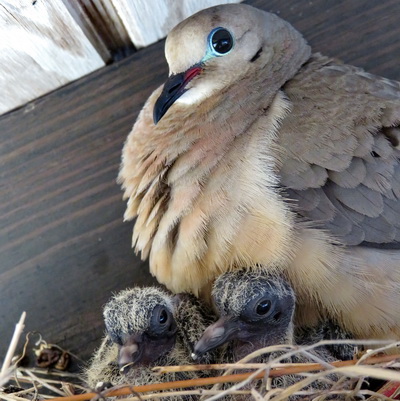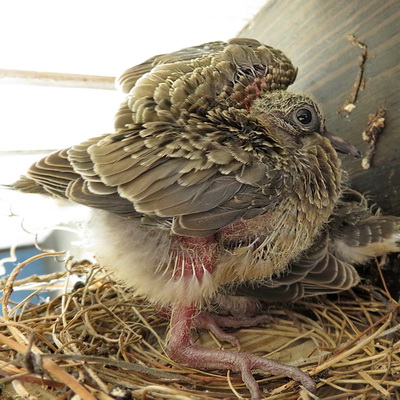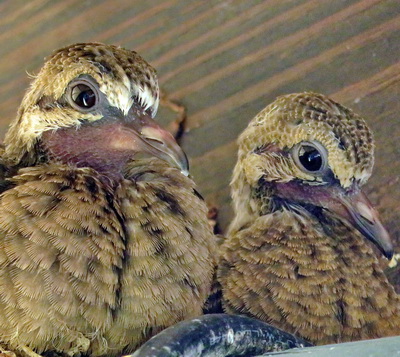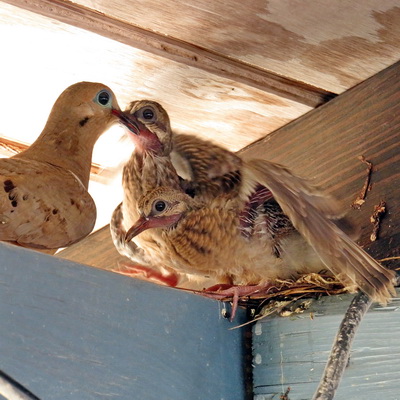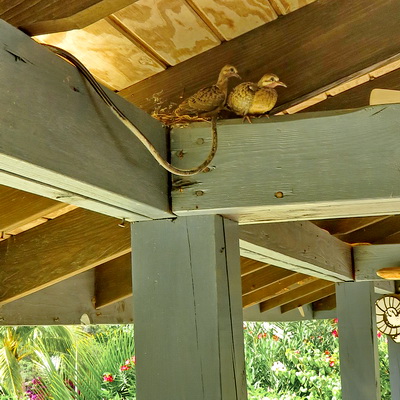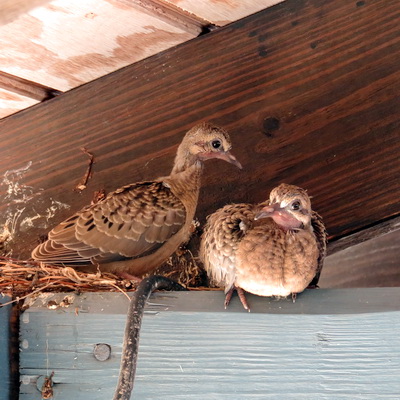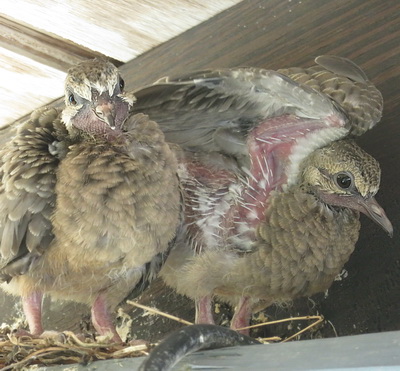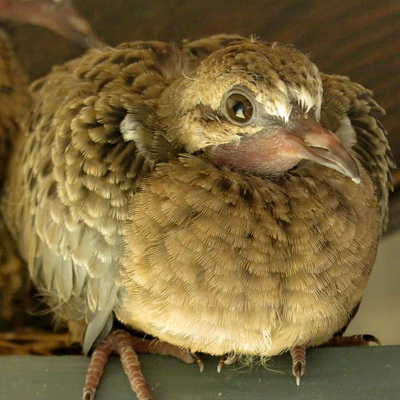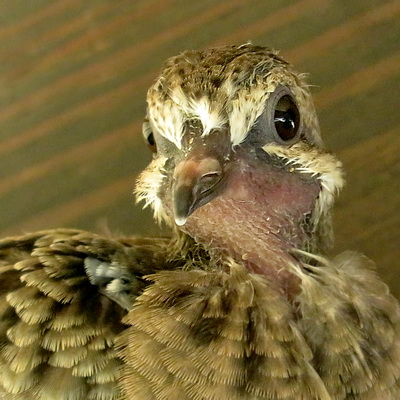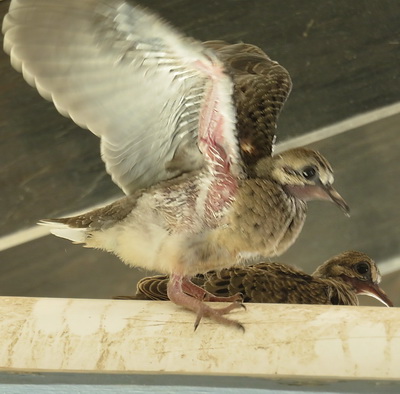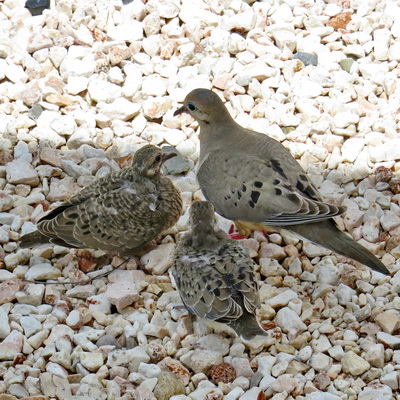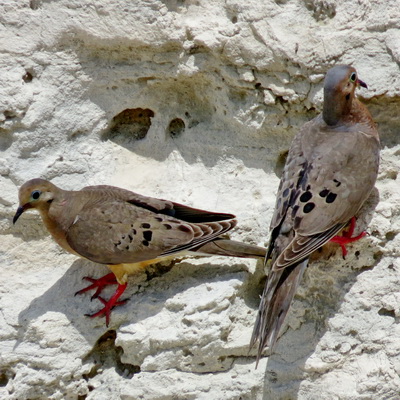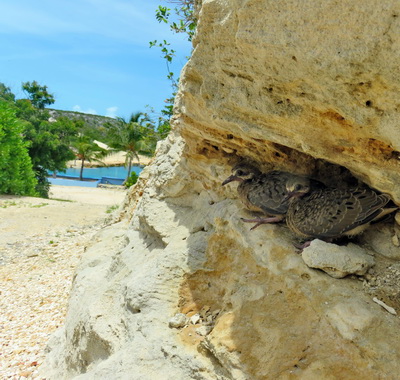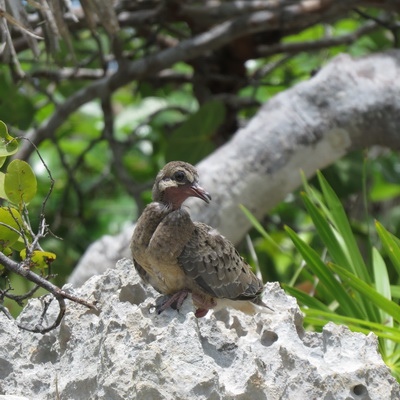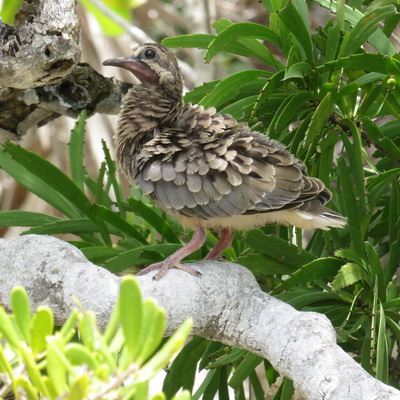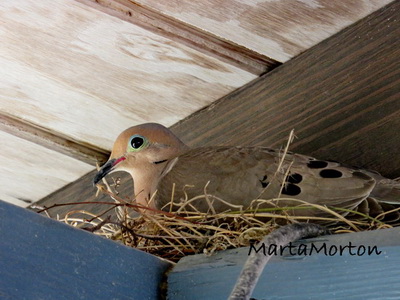
Mourning dove on her nest in the rafters of our tikihut.
We saw some twigs and straw sticking out of the rafters of the tikihut at Harbour Club Villas and Marina. As we went to clean it up, we discovered this pretty little Mourning Dove on its nest of twigs.
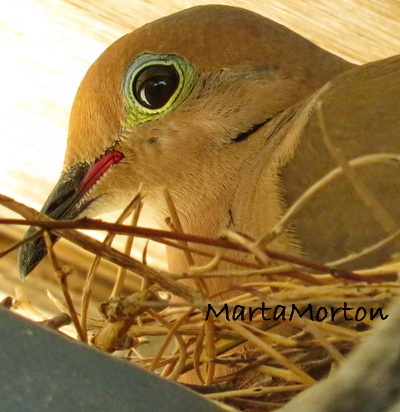
Close up of its head and extraordinary colours around the eye.
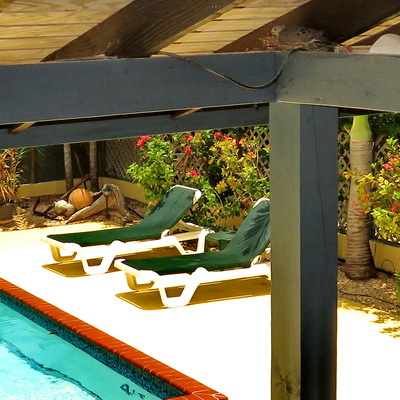
Here’s the nest up on a beam in Harbour Club’s tikihut by the pool.
The mourning dove is named for the rather haunting and sad cooing sound it makes. When it flies, it’s wings make a whistling sound. They are mostly seed eaters that feed on the ground and here at Harbour Club Villas, we often see them pecking at the gravel under our neem trees.
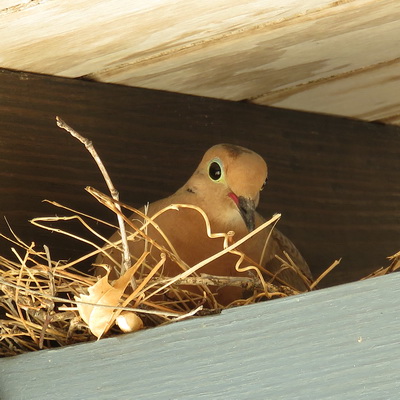
The dove definitely didn’t let me out of her sight.
I couldn’t resist shooing it off the nest so that I could photograph the two eggs. Both parents will build a rather flimsy platform nest usually up high in a tree or a bush. The eggs hatch after 14 days or so and one is laid in the evening and the second one in the morning. Now I didn’t know that both parents care for the little ones. I have noticed another dove hanging around that has been spotted on the roof of the tikihut. I also learned that it’s usually the male that incubates the eggs during the day and the female at night. I don’t know that I can tell the difference between the male and the female.
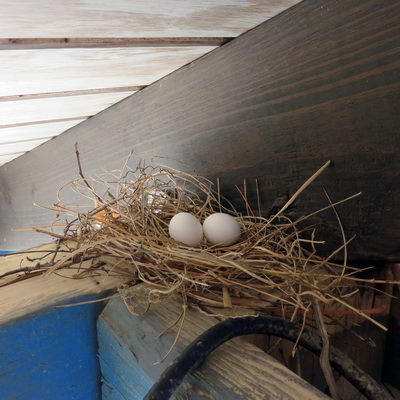
Two white eggs in a very sparse looking nest of twigs.
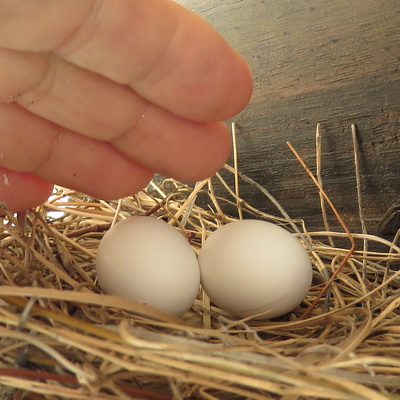
My hand just to give you an idea of the size of the eggs
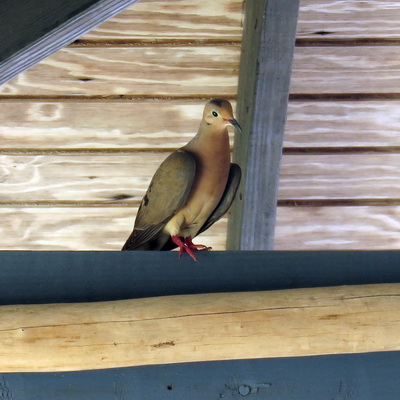
Someone is watching me very carefully? Not sure if this is a male or female.
The mourning dove is 9-13 inches in length and has a wingspan of 15-18 inches. It has a grayish-brown body and quite a long, pointed tail that has a border of white. The dove’s head is small and rounded with a small, thin, black bill. Legs and feet are pink. The wing has black spots and there is a black spot under the eye. The eyes are brown and surrounded by a blue circle of skin. Males and females look alike, but the female is slightly smaller and duller in color.
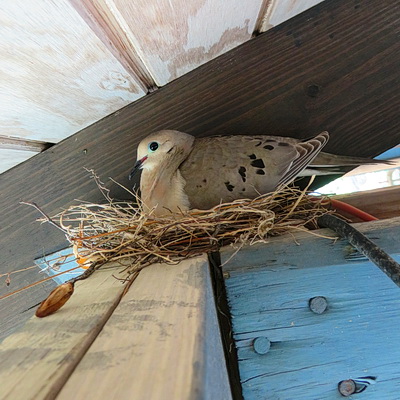
The dove started to puff up as I brought my camera closer.

Fanning out wings and tail feathers to ward me off in the hopes I would go away.
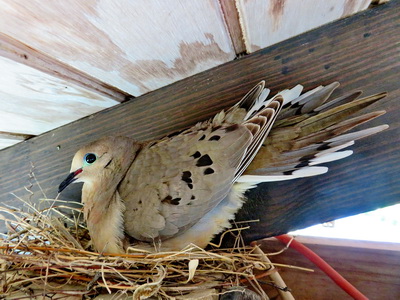
How beautiful are those tail feathers!
Both parents will feed the chicks that are also called squabs. They are fed pigeon milk which is a mixture of water, fat, minerals, and protein that the male and female mourning doves produce in their crop. The crop is a sac that is found at the bottom of their esophagus.
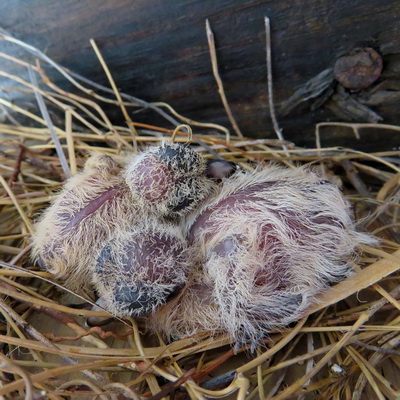
Two little baby doves huddled together……….no wonder the dove was protective.
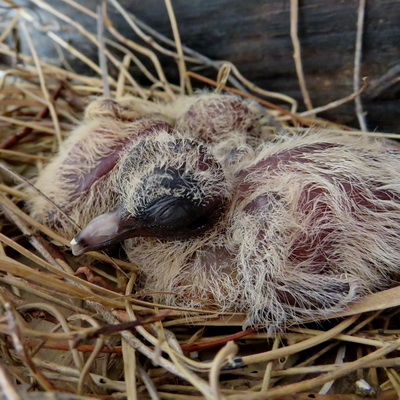
Close up of one of the little doves.
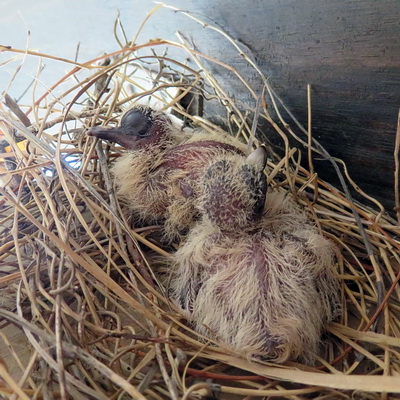
The chicks will fledge when they are 2 weeks old.
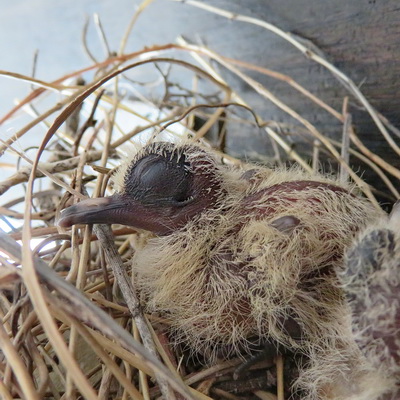
Nestlings are cared for by both parents and fledge in about 12-14 days.
In the days to come, I will add more photos as the chicks grow and leave the nest.
Marta
http://www.harbourclubvillas.com

